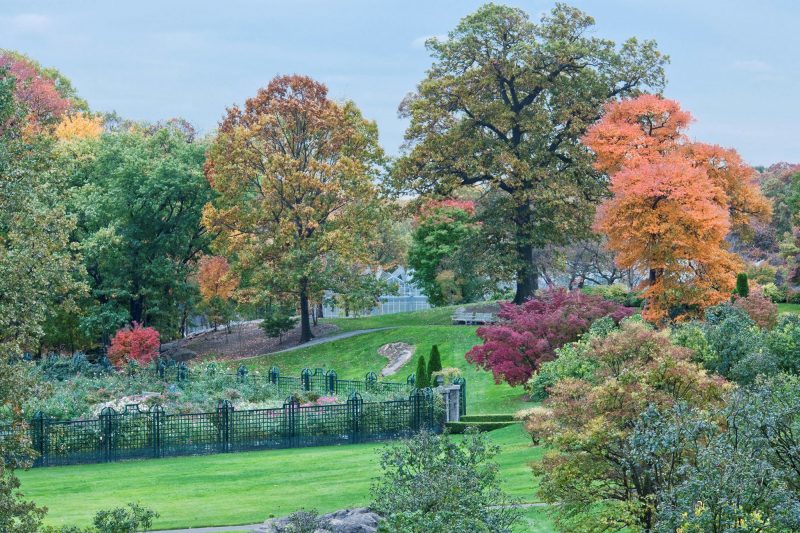Stewarding a Sylvan Landscape
Todd Forrest is the Arthur Ross Vice President for Horticulture & Living Collections at The New York Botanical Garden.

© Larry Lederman
This is the first installment of a five-part series on caring for NYBG’s magnificent trees.
The New York Botanical Garden has always been dedicated to keeping its trees healthy. Before taking possession of its site in 1895, the Garden commissioned a detailed survey of the landscape, which identified the locations of notable trees. As founding director Nathaniel Lord Britton oversaw the construction of the Garden’s infrastructure in the late 19th century, protecting these trees was at the top of his mind. His general plan preserved the native forest in its entirety and sited roads and buildings to avoid damaging healthy trees wherever they grew. Where possible, new tree collections incorporated native specimens and both pre-existing and planted trees were labeled for visitors.
While the initial layout of the tree collections was based on the evolutionary relationships between plant families, Britton did make an attempt to plant trees with specific horticultural needs in the proper sites. For example, the “Salicetum,” or collection of willows and their relatives, was located in a low, wet area adjacent to the Bronx River in the north end of the Garden. In Britton’s time, the arboricultural practices applied at the Garden were fairly straightforward. Dead and dying trees were removed, healthy trees were occasionally fertilized with top-dressings of manure, and pruning was limited to the removal of diseased, dead, or crossing limbs or the training of young trees.
Arboricultural techniques applied at the Garden have evolved significantly since the early 20th century. Garden mycologist William Murrill first described and named the fungus that causes chestnut blight in 1905 after infected plants were discovered in the Bronx Zoo. The devastating impacts of this blight on the forests of eastern North America played a role in the evolution of more sophisticated techniques for diagnosing and treating diseases of trees. Pascal Pirone, one of the 20th century’s leading figures in the study of the health of ornamental trees, built on Murrill’s work as a plant pathologist at the Garden from 1947 to 1974. Pirone used his work with the Garden’s tree collections to author two textbooks: Diseases and Pests of Ornamental Plants and Tree Maintenance. His research led to the development of many new products used to treat specific insects and diseases of trees.
Pirone’s dedication to keeping trees healthy is carried on today by the current generation of Garden arborists, gardeners, curators, and plant health experts. Utilizing a wide array of tools and techniques and drawing from the research of entomologists, mycologists, plant pathologists, and soil scientists, Garden staff work diligently to diagnose and treat infections, improve soil health, and maintain tree vigor through selective pruning. The beauty and diversity of the Garden’s trees are a living testimony to their work and the work of the generations of concerned stewards who came before them.
The next installment in the series focuses on planting new trees. This article originally appeared in the Summer 2021 edition of Garden News.
SUBSCRIBE
Enter your email address to subscribe to this blog and receive updates on new posts.











